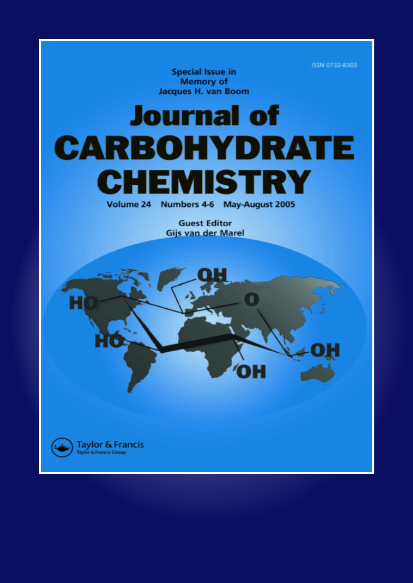A glycosylated naphthalimide conjugate preferentially accumulates in metastatic hepatocellular carcinoma as ROS-mediated mitochondrial-targeted antimetastatic agent
IF 2.2
4区 化学
Q4 BIOCHEMISTRY & MOLECULAR BIOLOGY
引用次数: 0
Abstract
For patients with hepatocellular carcinoma (HCC), recurrence and metastasis lead to approximately 90% deaths, even after various standard therapies, indicating the need for novel therapies and antimetastatic drugs. Recently, mitochondrial dysfunction has been shown to be closely associated with HCC recurrence and metastasis. Herein, a novel glycosylated naphthalimide conjugate 4a was explored to target HCC and HCC metastasis by inducing ROS-mediated mitochondrial metabolic programs in HCC, remarkably improving the efficacy of amonafide and prolonging the survival of mice. Mechanistically, 4a, as a potential fluorescent chemical probe, could target mitochondria, which is completely different from amonafide. Preliminary investigation into the mechanism of 4a indicates that it localizes in the mitochondria and selectively causes reactive oxygen species (ROS) overproduction in HCC instead of the matched normal liver cells, leading to HCC cell apoptosis and migration inhibition via multiple ROS-mediated signaling pathways. In addition to exposing a previously undefined mitochondrial metabolic program in HCC, our study further illuminates an unrecognized naphthalimide-based tumor therapeutic strategy to prolong the life of terminal HCC in a completely new field.
糖基化萘酰亚胺缀合物优先在转移性肝癌中积累,作为ros介导的线粒体靶向抗转移剂
对于肝细胞癌(HCC)患者,即使在各种标准治疗后,复发和转移导致约90%的死亡,这表明需要新的治疗方法和抗转移药物。近年来,线粒体功能障碍已被证明与HCC的复发和转移密切相关。本研究探索一种新型糖基化萘酰亚胺偶联物4a,通过诱导ros介导的肝癌线粒体代谢程序,靶向肝癌及肝癌转移,显著提高氨那定的疗效,延长小鼠生存期。从机制上讲,4a作为一种潜在的荧光化学探针,可以靶向线粒体,这与氨氮完全不同。对4a机制的初步研究表明,它定位于线粒体,在HCC中选择性地导致活性氧(ROS)过量产生,而不是匹配的正常肝细胞,通过多种ROS介导的信号通路导致HCC细胞凋亡和迁移抑制。除了揭示HCC中先前未定义的线粒体代谢程序外,我们的研究进一步阐明了一种未被认识的基于萘酰亚胺的肿瘤治疗策略,可以在一个全新的领域延长晚期HCC的生命。
本文章由计算机程序翻译,如有差异,请以英文原文为准。
求助全文
约1分钟内获得全文
求助全文
来源期刊

Journal of Carbohydrate Chemistry
化学-生化与分子生物学
CiteScore
2.10
自引率
0.00%
发文量
20
审稿时长
1 months
期刊介绍:
The Journal of Carbohydrate Chemistry serves as an international forum for research advances involving the chemistry and biology of carbohydrates. The following aspects are considered to fall within the scope of this journal:
-novel synthetic methods involving carbohydrates, oligosaccharides, and glycoconjugates-
the use of chemical methods to address aspects of glycobiology-
spectroscopic and crystallographic structure studies of carbohydrates-
computational and molecular modeling studies-
physicochemical studies involving carbohydrates and the chemistry and biochemistry of carbohydrate polymers.
 求助内容:
求助内容: 应助结果提醒方式:
应助结果提醒方式:


